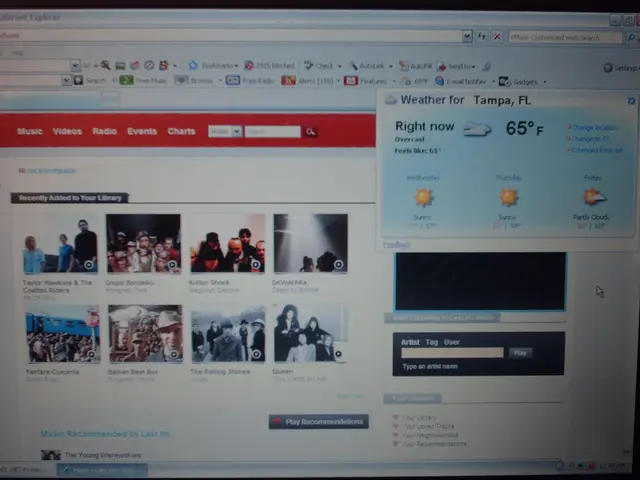Continuous Struggle Between EU and US Over Issue of Child Labor Exploitation
Child Labor: A Global Crisis Persisting Amidst Progress
Child labor continues to be a widespread issue across the globe, despite notable advancements. The economic disruption caused by the COVID-19 pandemic and international conflicts have forced numerous families into poverty, threatening to halt the steady progress made since 2000.
However, recent findings from the UNICEF and International Labour Organization (ILO) show a decline in child labor, with an estimated 138 million children involved in 2025, a decrease from 160 million four years prior.
"Our report demonstrates that progress is indeed possible," said ILO Director-General Gilbert F. Houngbo, in a press release. "But we must keep our focus on the long road ahead to fully eliminate child labor."
What is Considered Child Labor?
Child labor is essentially any form of work that exploits or oppresses a minor and interferes with their education, health, or overall well-being, according to Nina Mast, an analyst with the Economic Policy Institute.
The prevalence of child labor is high in the world's poorest countries, particularly sub-Saharan Africa, which accounts for two-thirds of all child laborers. Despite this, higher-income regions such as the European Union (EU) and the United States also struggle with child labor, often hidden within agriculture, informal work, or marginalized communities.
The US Confronts Child Labor Breaches
Nina Mast emphasizes that child labor breaches extend beyond unpaid or hazardous work, encompassing conditions such as excessive hours or any work that jeopardizes a child's education. According to the US Department of Labor, violations of the Fair Labor Standards Act have significantly increased since the pandemic, with a 31% rise in child labor law infringements between 2019 and 2024.
Mast attributes the surge in violations mainly to intensified enforcement by the US Department of Labor, although the actual increase in child labor may also be a factor.
Typical violations in the US involve children working later or for extended hours, using machinery prohibited for their age, or engaging in tasks that are inappropriate due to their age. Another important issue is commercial agriculture, where children as young as ten often work under harmful conditions.
"In agriculture, low standards persist, making it the deadliest industry for children in terms of fatality rate," said Mast. "This issue remains unaddressed."
Child Labor in Europe: A Hidden Problem
Approximately 71% of all child laborers work in agriculture, a significant concern in Europe as well. Marco Dubbelt, a director with Global March, a network dedicated to the elimination of child labor, slavery, and trafficking, mentions recent violations in countries like Albania, Romania, and Italy's fruit and vegetable sector.
"Child labor may not seem as alarming as child labor in Africa's mines," Dubbelt explained, "but it involves working with pesticides and under extreme heat stress, posing serious health risks for children."
Although the prevalence of child labor is lower in the EU compared to global levels, it mostly occurs in agriculture, informal services, and among marginalized communities.
The EU has made efforts to address child labor by eliminating it in all forms through legislation and sustainable development initiatives. The EU Directive on the Protection of Young People at Work mandates member states to ban employment of children under 15 and those still in full-time education, with exceptions. However, data on child labor in higher-income countries is scarce, making accurate reporting difficult.
Back in 2021, the EU signed up to a global initiative to designate 2025 as the year to end child labor in all forms. Although this goal remains unachieved, the EU does have stringent laws in place to protect children from harmful labor practices.
The Fight Against Child Labor Extends Beyond Borders
As Dubbelt notes, addressing child labor in the EU involves tackling issues within its supply chains from outside the bloc. The lack of reliable data is a significant challenge, making it difficult to establish connections between child labor and various supply chains.
Ultimately, the elimination of child labor requires a comprehensive approach, targeting root causes such as poverty, lack of decent work for adults, weak legal protections, and inadequate access to quality education.
[1] Child labor: definitions and Thresholds, ILO, 2023.[2] The Impact of Child Labor in Agriculture, ILO, 2023.[3] Ending Child Labor in Agriculture: Global Ratios, Stats, and Solutions, ILO, 2023.[4] Child Labor in the United States: Understanding the Issues, Child Labor Coalition, 2022.[5] Shining a Light on Child Labor: A Global Perspective, UNICEF, 2021.
- In sub-Saharan Africa, which accounts for two-thirds of all child laborers worldwide, child labor interferes not only with education and health but also with overall well-being in the society.
- The World Health Organization (WHO) acknowledges that mental health issues, including anxiety and depression, are more prevalent among children engaged in exploitative labor.
- Europe, like the United States, confronts child labor within sectors such as agriculture, informal work, and marginalized communities, though data on this issue is often difficult to obtain and report accurately.
- The international media can play a critical role in shedding light on these hidden cases of child labor, initiating discussions about policy-and-legislation changes to combat the issue in Europe and beyond.
- Lifelong-learning through education-and-self-development programs can empower children, providing them with alternate opportunities, such as sports or cultural activities, to achieve a promising future free from child labor.
- In the European Union's (EU) passion for sports, sports-betting has emerged as an increasing concern, with a growing number of young people engaging in this activity and potentially becoming vulnerable to coercion and exploitation.
- Collaborative efforts among governments, international organizations, NGOs, and the media are essential to ensure policy-and-legislation addressing child labor is effective in both high-income and lower-income regions of the world.
- Strict enforcement of labor laws, particularly in the agriculture sector and along supply chains, can help in reducing instances of child labor and promoting workplace-wellness.
- The General News Network launched a comprehensive campaign to investigate and expose cases of child labor across diverse sectors, aiming to bring awareness and catalyze change on a global scale.
- Crime-and-justice systems worldwide must prioritize policy-and-legislation aimed at identifying, prosecuting, and penalizing offenders involved in perpetuating child labor, to act as a deterrent and ensure long-term change for the betterment of society's youngest workers.







